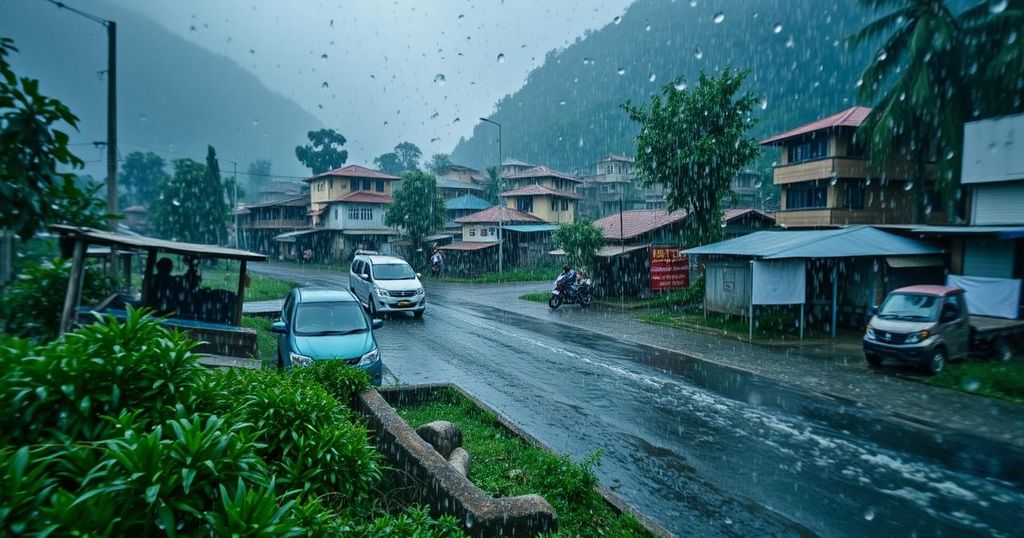Human-Induced Climate Change Intensifies Nepal’s September Floods

A recent study reveals that the intense rainfall associated with the September floods in Nepal was exacerbated by climate change, leading to over 240 deaths. The World Weather Attribution analysis showed a 10 percent increase in rainfall intensity due to human activities. Recommendations for limiting urban development in flood-prone areas and enhancing early warning systems were emphasized by researchers.
Recent research indicates that human-induced climate change significantly intensified the rainfall during the late September floods in Nepal, which tragically resulted in over 240 fatalities. This analysis, conducted by World Weather Attribution (WWA), reveals that the rainfall was approximately 10 percent more intense due to factors linked to climate change. The devastating floods occurred after three days of unprecedented rainfall, some stations reporting more than 320 mm on September 28, leading to substantial loss of life and property across the country. The WWA, a coalition of international scientists specializing in assessing the relationship between climate change and extreme weather phenomena, emphasizes the urgent need for Nepal to implement measures to restrict development in flood-prone urban areas. The rapid urbanization seen in Kathmandu, particularly around the Bagmati River, exacerbated the impacts of the floods, as eyewitness reports noted that the scale of flooding was unprecedented. In light of these findings, the study advocates for improved early warning systems and proactive measures to mitigate the risks of future flooding disasters. A team of 20 researchers from Nepal, India, Sweden, the United States, and the United Kingdom contributed to the analysis, highlighting Asia’s vulnerability to increasing rainfall events caused by climate change. Experts involved in the research underscored the critical role of fossil fuels in intensifying such natural disasters, advocating for a transition towards renewable energy sources to avert future crises.
Nepal’s geographical and climatic conditions make it particularly susceptible to extreme weather events, such as significant rainfall leading to floods. The country has experienced rapid urban growth, especially in cities like Kathmandu, which has historically been constructed in areas prone to flooding. Scholars from WWA, a recognized organization, frequently study these connections, providing insights into the impacts of climate change on localized weather patterns and natural disasters. Their analysis serves as a crucial indicator of how anthropogenic factors contribute to the severity of weather-related disasters worldwide, particularly in vulnerable regions of Asia.
In conclusion, the late September floods in Nepal illustrate the direct consequences of climate change, as evidenced by a WWA study attributing the intensity of the rainfall to human activities. The significant loss of life and property emphasizes the need for urgent action, including urban planning reforms and enhanced early warning systems. This incident serves as a call to action for governments and scientists alike to address the impacts of climate change seriously to prevent future tragedies.
Original Source: theprint.in






